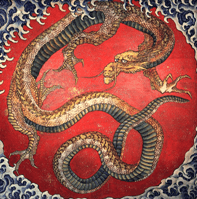
Sicilian Endgames: exd5
In this article, I will be discussing another archetypal Sicilian endgame. This one occurs after White occupies d5 with a knight which is then traded off and recaptured by exd5. This structure frequently arises from the Dragon, Accelerated Dragon and Maroczy Bind structures.
Quite often in this "Marco Hop" trade, White ends up with a light-squared bishop against a black knight. Though White will have good chances to exert pressure along the e-file against Black's backward e7-pawn, one of the questions we will try to answer in this article is whether Black's "good knight" can overcome White's "bad bishop" to compensate for the e7-pawn weakness.
When comparing the minor pieces, it is hard to have a lot of love for the white bishop. The bishop is blocked by its center pawn on d5 and the position looks pretty static, which is generally good for the side with the knight. The knight seems to have some pretty nice dark squares to hop around on, and it even looks like Black has a bit of initiative on the queenside.
But Karpov - and many other great players - understood the secret value of this light-squared bishop. In this structure, with Black seemingly having everything he could want, White has his pluses too. In addition to the already mention fact that the pawn on d5 holds back the two on d6 and e7, White also has a slow attack building on the kingside. It is also hard for Black's play on the queenside to go anywhere.

The continuation of the game was instructive. Tony Miles was a great and creative player. His victory as Black against Karpov with 1.e4 a6?! was nothing short of historic. Even so, Karpov had a massive plus score against him (+11, by my count from the database), and in this game, Karpov showed his class.
Does Karpov's victory mean that this structure always favors White? "Always" is rarely a credible word in chess, and many positions favored Karpov. The structure gives White a certain space advantage, but it can sometimes strengthen Black's counterplay on the queenside while reducing White's dynamic possibilities.
Here is an interesting game I played in a tournament in the Dominican Republic against Cuban GM Lelys Martinez. We see that the break ...g5, fighting for the dark squares, is a relevant concept in this structure while the position of the black knight on b6 (rather than c5 as in the Karpov game) has its value.
RELATED STUDY MATERIAL
- Read GM Bryan Smith's previous article in the Sicilian series: Sicilian Endgames: Three Pawns for the Piece;
- Learn the White side of the force in GM Ben Finegold's video Beating Your Nemesis: Smashing the Sicilian!;
- Deepen your Sicilian insight with Chess Mentor;
- Sharpen your vision in our Tactics Trainer;
- Looking for articles with deeper analysis? Preview our magazine: The Master's Bulletin.



